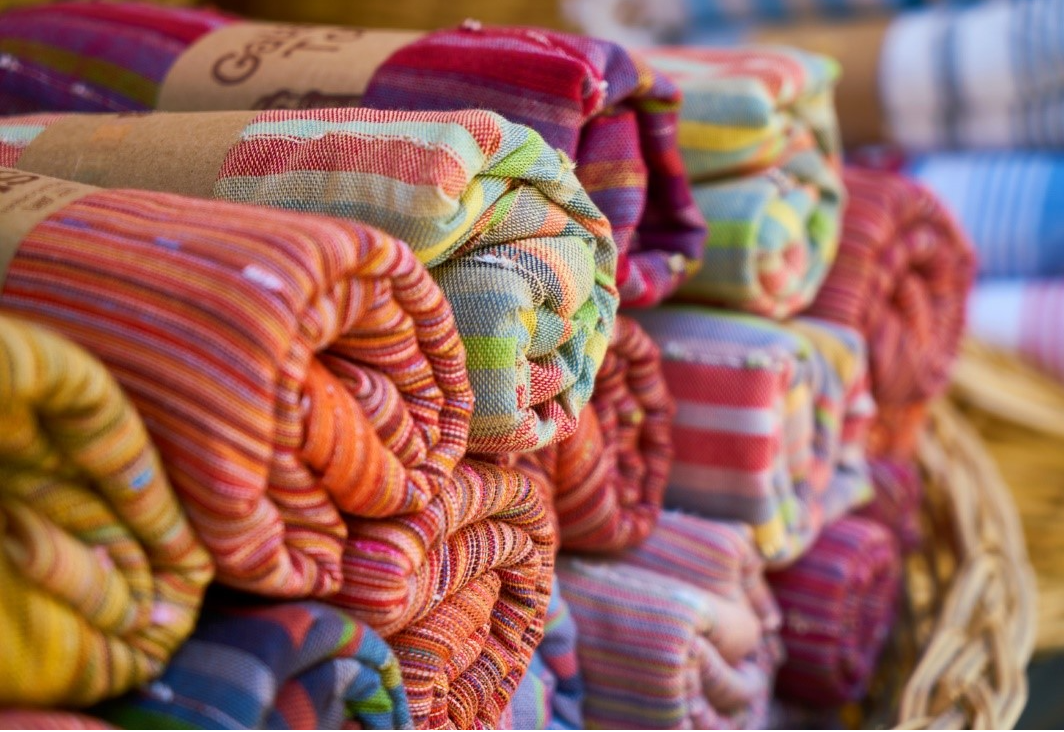
Kenya's textile and apparel industry plays an important role in the country's economy, providing jobs and income for many of its citizens. The industry is primarily focused on the production of clothing and textiles for export, with major markets including the United States, United Kingdom, and European Union. Kenya's textile and apparel industry has been growing in recent years, with a focus on increasing productivity and improving the quality of products. The government has implemented several initiatives to support the growth of the industry, such as providing tax incentives for textile and apparel manufacturers and investing in infrastructure to improve the efficiency of transportation and logistics.
The textiles and apparel sector has been identified as a priority sector by the Kenyan Government under the Bottom-up Economic Transformation Agenda. The sector is a key foreign exchange earner for the country with the value of exports of textiles and apparel averaging approximately Kshs 40 billion in the last five years (2018-2022). In 2022, the sector contributed Kshs 47.3 billion and was the third in export earnings after tea and coffee respectively.
Kenya’s trade in textile and apparel has the following product categories namely Knitted or crocheted fabrics (HS 60), Articles of apparel and clothing accessories, knitted or crocheted (HS 61), Articles of apparel and clothing accessories, not knitted or crocheted (HS 62) and Other made-up textile articles; sets; worn clothing and worn textile articles; rags (HS 63). In addition, Kenya is known for its vibrant fashion industry, with many local designers producing a wide range of clothing and accessories.
The leading Kenyan export products of apparel and textile to the world are articles of apparel and clothing accessories, not knitted or crocheted (3.4%) followed by articles of apparel and clothing accessories, knitted or crocheted (2.3%). These 2 categories (61 and 62) have supported the textile and apparel producers in the EPZs in Kenya and have been identified as growth sub-sectors and going forward Kenya considers the sectors for widening the net for employment of the youth and TVET graduates.
The major export destination for Kenya’s garment sector is the United States of America under the African Growth and Opportunity Act (AGOA) initiative. Almost half of Kenya’s apparel exports to the US are in women's and girls’ cotton trousers, slacks, and shorts, and manmade fiber slacks, breeches, shorts, knit shirts, and blouse. Kenya’s textile and garment export market base is extremely narrow, and the sub-sector is highly dependent on the AGOA privileges. AGOA provides the largest market for Kenyan apparel. The AGOA Act was established in 2000 to provide eligible Sub-Saharan African countries with duty-free access to the U.S. market for over 1,800 products, in addition to the more than 5,000 products that are eligible for duty-free access under the Generalized System of Preferences program.
Kenya is now the largest exporter of apparel under the AGOA program. Kenya is in a strong position to capitalize on AGOA: the country already captures more than a third of all apparel exports from Sub-Saharan Africa to the US. In addition, 70 percent of Kenyan apparel firms have a US-dominant market orientation. Other initiatives to strengthen manufacturing have been the new government’s favorable tax measures, including the removal of duty on capital equipment and other raw materials.
Apart from USA under AGOA, other markets with potential for Kenya’s exports of HOME TEXTILES, fabric and apparels include Netherlands, Germany and UK. Kenya also exports fibre, textiles and apparels to other countries including Uganda, Tanzania, Saudi Arabia, China, Nigeria, India, Democratic Republic of Congo, Zambia, Somalia, Spain, Ethiopia, Philippines, South Sudan, Morocco, Canada, Germany, Rwanda, Egypt Pakistan, Ghana, Mexico, Malawi, Belgium, Italy, Burundi, Indonesia and Panama.
The bilateral and regional preferential trade arrangements in which Kenya is currently involved presents ample opportunities for the expansion of the export base for cotton products. Besides, the gradual reduction of tariffs at the multilateral level and the increase in world population provide opportunities for increasing exports. With the changes in the global apparel sourcing supply chain in the world, Kenya has been able to attract a substantial number of world buyers and these figures can grow when we enhance our competitiveness and diversify our markets.
The textiles and apparel sector has the ability to spearhead industrialization in the Country given the number of jobs its generating, the forward and backward linkages, the production of cotton which is done in 24 Counties of Busia, Bungoma, Siaya, Kisumu, Homabay, Migori, Baringo, Elgeyo Marakwet, West Pokot, Tharaka Nithi, Embu, Kirinyaga, Meru, Isiolo, Murang’a, Marsabit, Tana River, Lamu, Kwale, Kilifi, Taita Taveta, Machakos, Kitui and Makueni respectively.
With the coming of the 4th industrial revolution and the changes in the global manufacturing, consumption, and sourcing dynamics; Kenya lies in a good position to turn the waves into energy that will propel the country to the next frontier.
The markets with potential for Kenya’s textile and apparels export products include but not limited to the following countries;
- USA
- Germany
- Italy
- Netherlands
- The AfCFTA- DRC Congo, South Sudan, Nigeria among others.
Players in this sector are therefore urged to exploit opportunities offered by the above markets.
